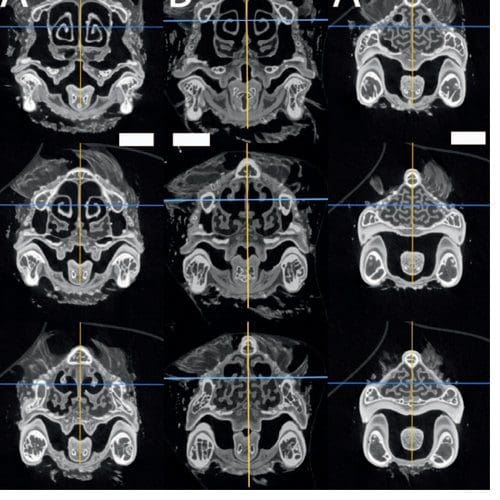
Imagine doctors looking inside their patient’s bones, seeing each layer in order to pinpoint a problem without ever resorting to the operating table. Imagine researchers manipulating 3-D images of their subjects, breaking them down layer by layer without physical dissection. These scenarios may seem futuristic, but in reality this is cutting-edge research happening in labs and hospitals across the country. And now, it’s happening in UNCW classrooms.
Assistant Professor of biology and marine biology Raymond Danner and Lecturer of biology and marine biology Carolina Priester recently won a grant from ETEAL with supplemental funds from the Center for Teaching Excellence to implement a new technology called Osirix in their classes. With this funding, Danner and Priester purchased iPads for their students to use the Osirix software, which has a database full of three-dimensional models composed of thousands of MRI and CT images. This software helps scientists more closely study their subjects, just as it helps surgeons engage in pre-surgical planning before ever making a cut.
“We thought, ‘These tools are out there,’” said Danner, “and we knew we needed to put them in the hands of our students. We’re trying to give them specific skills to enhance their learning experience. By using this software, we’re able to pull any anatomical structures you can imagine and put them in front of students to manipulate and explore.”
Osirix offers technological insight of the brain and the entire human structure including all tissues both boney and soft. Because the models are comprised of images from actual living specimens, the level of detail students can see is far superior to digitally constructed models. Danner and Priester said that using this kind of technology not only prepares students for future jobs in scientific research and medicine, it also helps students develop their spatial thinking – a skill that is becoming increasingly recognized as a key contributor to critical thinking. Instead of guessing where something might be located on a two-dimensional drawing, students are able to physically see what they’re looking for on the three-dimensional model.